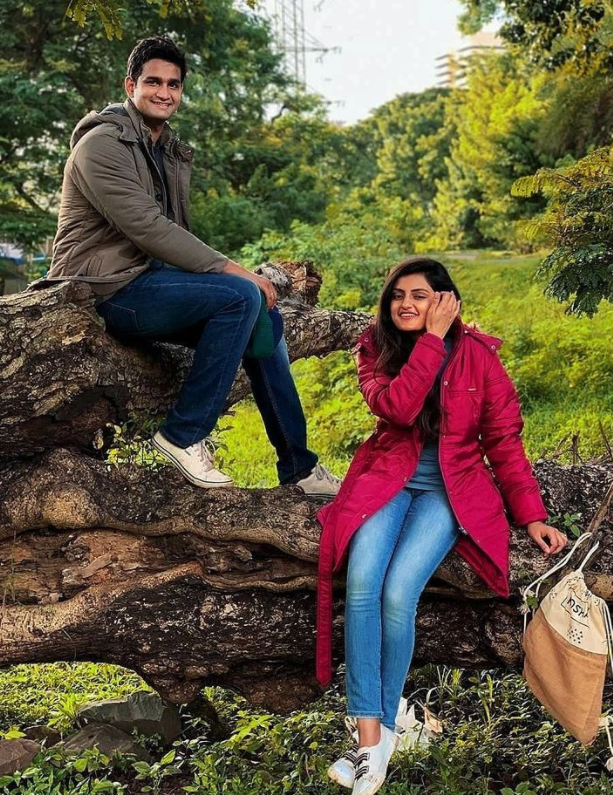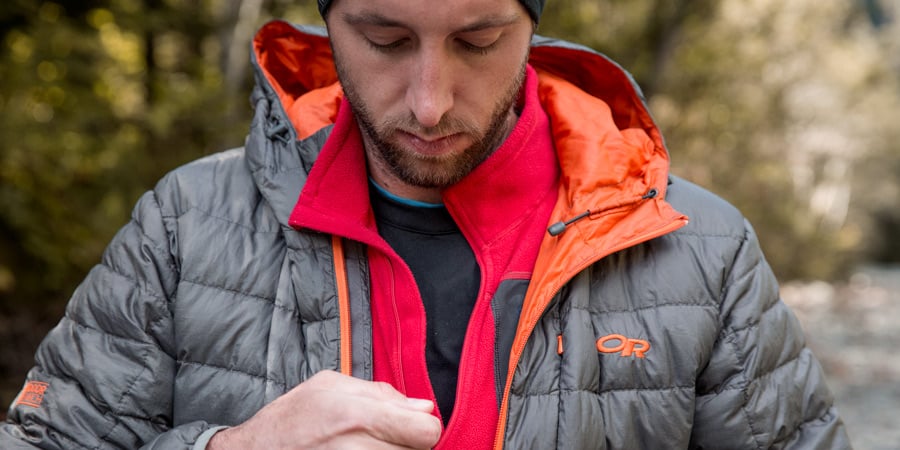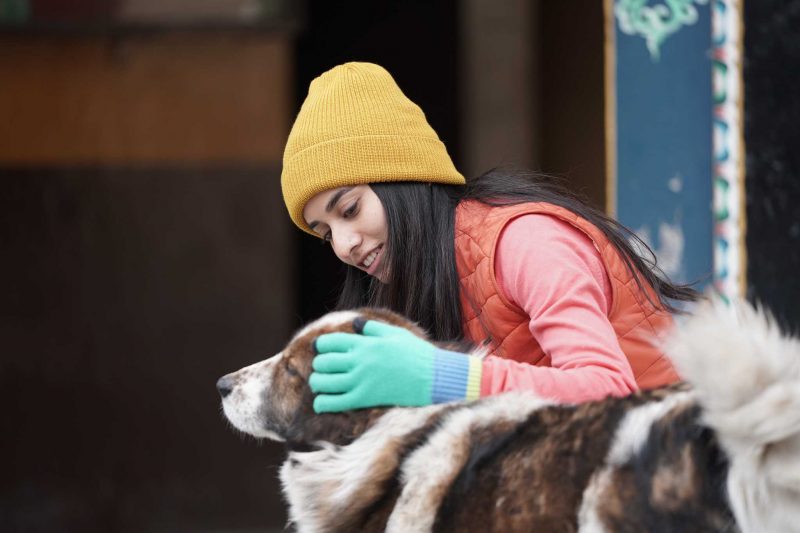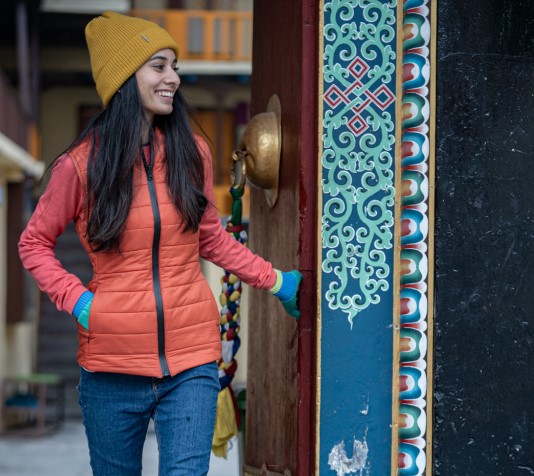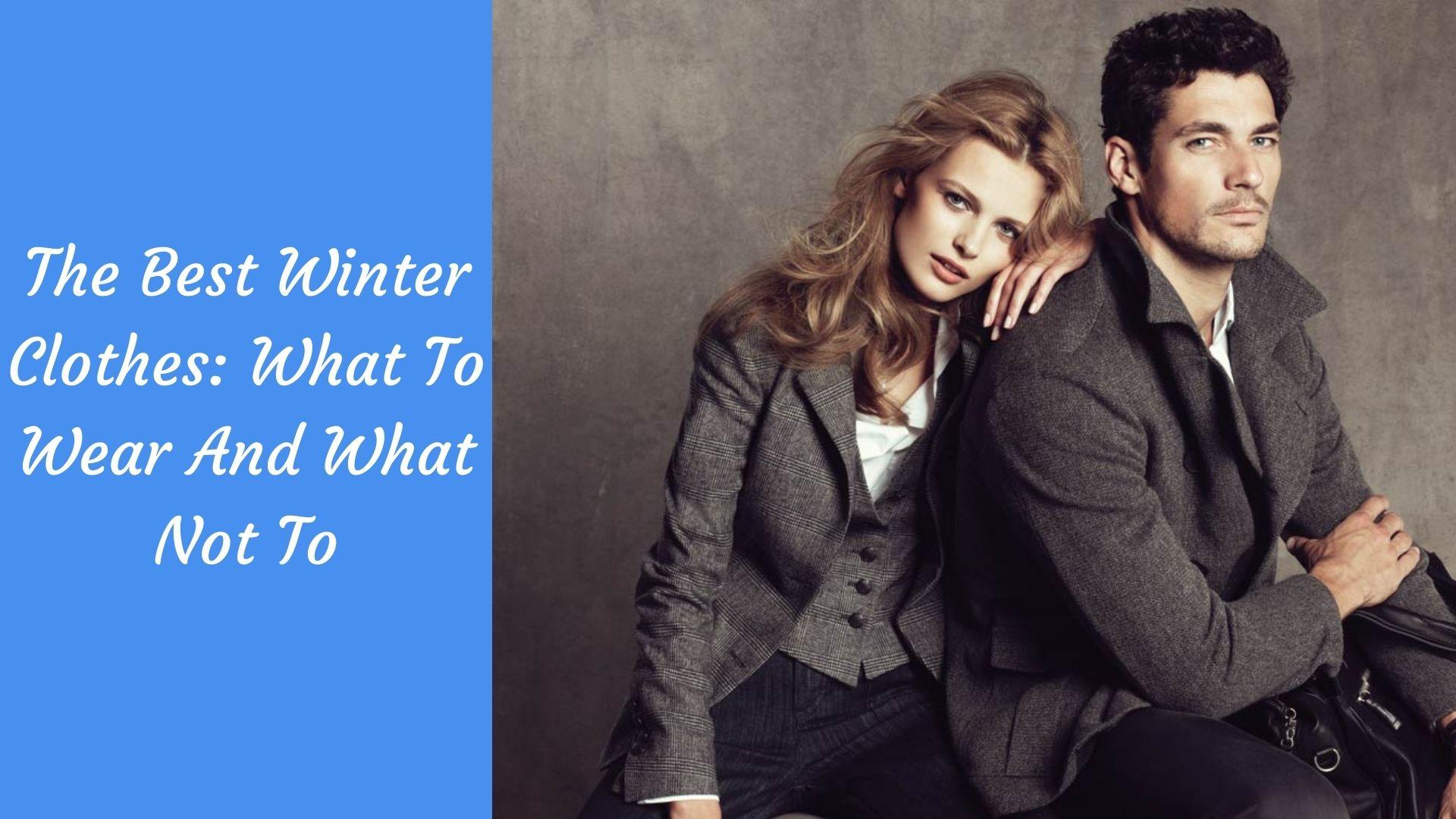
Temperatures are starting to drop, so it’s time to start thinking about how to stay warm. When it comes to winter clothes, you’re probably like most people: you have no idea what to get. The information in this article on winter clothing will help you be ready for whatever mother nature decides to throw at you!
You’ll get much more from this post than just a good suggestion for winter apparel. This is a worthwhile investment of your time.
Nevertheless, what are the greatest winter outfits that will keep you warm while also looking great on the outside? Let’s explore some crucial winter fashion and styling advice for men and women.
Table of Contents
Winter Wear: 5 Essentials
Is “what should I wear in the winter?” one of your most often asked questions? Obviously, the answer depends on where you reside in terms of the pace of temperature decline.
So, what are some decent winter wear options? Refer to these five winter necessities; you will be prepared for any type of winter climate.
1. Coats
While choosing coats, there are a few factors that you need to keep in mind.
- First, you must ensure that the coat is long enough to keep you warm.
- Second, the coat you select must not be too bulky so that you can move around freely.
- And lastly, make sure that the coat is waterproof to keep you dry in the snow or during fogs.
There are a few different types of coats that you can choose from.
For example, parkas are great for cold weather since they are made with synthetic insulation. Another option is a ski jacket to keep you warm and dry on the slopes. Or, if you just need a light jacket for everyday wear, you can opt for a trench coat or pea coat.
Winter coat selection is mostly a matter of personal taste and requirements. Keeping these three factors in mind can help you find the perfect winter coat.
2. Sweaters
Sweaters are an excellent option for winter clothes. They are comfortable, warm, and come in various styles; you can dress them depending on the occasion. Sweaters are a must-have item in any winter wardrobe.
They provide warmth and comfort while still looking stylish. Many different types of sweaters are available, so you can find the perfect one to suit your needs.
To help you find the perfect sweater, here are some pointers:
- Consider the type of fabric. Wool or cashmere will keep you warmest but may be a bit more expensive. Cotton and acrylic are more affordable options that are still warm.
- Choose a style that complements your body type. Consider the fit of your sweater if you want to show off your figure. Those extra pounds can be hidden by wearing a baggier style.
- Consider the hues and patterns that you enjoy the most. Darker colors and bold designs look well in winter.
- Choose a sweater that is versatile and can be worn with different outfits. A black sweater can be dressed anytime, while a patterned sweater can add fun to a simple outfit.
3. Boots
You must consider your overall look while choosing any style. For many individuals, boots are a winter must and there are a variety of styles to select from.
- First, there are traditional leather boots that offer good insulation and protection from any condition.
- Then there are synthetic boots which are often lighter and more comfortable but don’t offer as much protection.
- Finally, waterproof boots are great for keeping your feet dry in wet or slushy conditions.
When choosing a pair of boots, it’s essential to pick comfortable ones and go with your style outfit. For example, if you’re planning on mainly wearing jeans, you might want to get a pair of cowboy boots or hiking boots. If you wear skirts or dresses, you might want to get a couple of stylish rain boots or snow boots.
Whatever style of boots you choose, make sure they fit properly and keep your feet warm and dry throughout the winter.
4. Hats
When it comes to winter hats, there are so many options to choose from! You can go for a classic wool beanie, a cozy knit hat, or even a fur-lined option to keep your head and ears warm all winter long. And don’t forget about the ever-popular pom-pom hats!
No matter what your style is, there’s definitely a winter hat out there that will suit you.
5. Gloves
A good pair of gloves is one of the most important items in your winter wardrobe. If you are thinking to buy gloves for yourself, consider below tips:
- Look for gloves that are made of natural materials like wool or leather. These materials will help to keep your hands warm and dry.
- Make sure the gloves fit snugly but not too tight, so that you can move your fingers freely inside the gloves.
- Choose a style that suits your needs. Usually, gloves with extra grip or insulation is good for outdoor activities.
- Don’t forget about fashion! Gloves come in all colors and styles, so you can find a pair that perfectly matches your coat or scarf.
- If you are in any doubt, go with a classic black or brown pair of gloves. These hues complement everything and will never go out of style.
The Best Winter Clothes Fabrics
When it comes to picking the best fabrics for winter wear, there are a few key factors to keep in mind. You want something that will keep you warm but also breathable and comfortable. Here are a few of the best options:
1. Cotton
Cotton is a versatile fabric. It can be made thin for summer to keep you cool and thick for winter to keep you warm. It’s also an excellent choice for people who can’t wear wool because of an allergy.
It’s pretty durable, soft, and has a ventilation quality. However, you must avoid wearing it in case of rainy or super foggy days as it soaks up water and could not be the best fabric to wear.
2. Wool
Wool is a beautiful and very warm fabric to think about for winter. It is light but strong, which makes it pretty long-lasting and durable. Raw wool usually comes from sheep, but more recently, it has been made in factories and sold in stores.
Overall, it’s one of the best choices for cold-weather clothing that can be worn casually or formally. Merino wool is a perfect option as it’s softer and less itchy than other types of wool.
3. Fur and Faux Fur
Fur has been used to keep people warm for thousands of years. Wearing fur is more of a fashion statement than a necessity, but it will still keep you warm. The demand for fur has been increasing day by day, and so faux fur has also made its place.
These fabrics are warm and long-lasting, making them great for cold weather. But you need to know how to take care of them to look brand new for years.
4. Fleece
Fleece is almost always worn during the winter. It is very soft and light, making it a great material for casual everyday coats and jackets that will keep you warm while you’re on the go. In addition to being light, fleece is also cheap and usually doesn’t repel water.
Winter Clothes: Layering Tips
If you adhere to a few guidelines, believe it or not, it is feasible to stay warm and enjoy the outdoors in the winter. The first rule is that you must dress in layers. One of the best things about layering your clothing is that you can always add or remove layers to adjust to the temperature.
Let’s get you started with some great tips.
1. What To Look For In A Base Layer
When learning how to dress for winter in layers, the base layer is by far the most important. Think of the base layer you could as a second skin. A good base layer is one made of a material that pulls sweat away from your body. If you don’t get rid of your sweat, it can make you colder.
Merino Wool is a good choice for your base layer. It is thin, lets air in, and doesn’t have a smell, which makes it perfect for wicking away moisture.
You should make sure it fits well and feels good.
2. How to Pick a Layer in the Middle
The purpose of the middle layer is to keep the heat in. The majority of people have the misconception that the only way to keep warm is to wear a massive parka. However, the trick is to layer your clothing such that it can still breathe.
Fleece is a good solution for those who are more concerned about their budget. However, its effectiveness is significantly reduced when it is wet. Depending on the weather and the kind of activity you are partaking in, you may choose the fabric for mid-layer.
3. How to Pick the Outer Layer
Protecting oneself from severe weather conditions, such as wind, snow, and rain, requires having an appropriate outer shell. If you wear the appropriate layers below your top layer, you can easily prevent the wind from making you cold while still maintaining your body heat.
You must opt for something that is both waterproof and breathable to protect yourself properly. A nice choice would be either nylon or polyester.
Pro Tip: If you want your strategy of layering to work, remember that every single one of your layers needs to be breathable.
4. Parka Layering
Even when the clothing is in layers, there are times when something warmer for an outer layer is required. You may choose to wear a number of layers, but a parka will suffice while you’re just chilling out.
When it comes to casual outerwear, a warm parka is an absolute need.
5. Predict Your Body’s Temperature
Having the proper clothing layers is only the first step in staying warm throughout the winter. The second component involves learning how to control body temperature by adding and removing clothing as necessary. The most crucial aspect is to never become overheated.
The most common error is waiting too long to remove or add layers. For example, if you wait until you begin to shiver, it is too late to act. You should put on those warm clothes before you feel cold.
6. Safeguard Your Head, Face, and Toes
Do you know that you lose all of your body heat through your hands, feet, and head? As children, each one of us was responsible for doing it. Although we seldom wore hats and only occasionally wore gloves. It is important to cover our head, face, and toe.
Hence, try covering them with wool-made accessories. Additionally, these areas of your body are typically the first ones to feel the effects of the cold, so don’t forget to accessorize! Adding a scarf, hat, and gloves to your winter outfit will help keep you warm and finish off your look elegantly.
How to Care for Your Winter Wear
Winter clothing requires special care to keep them looking their best. Here are some tips on how to care for your winter clothes:
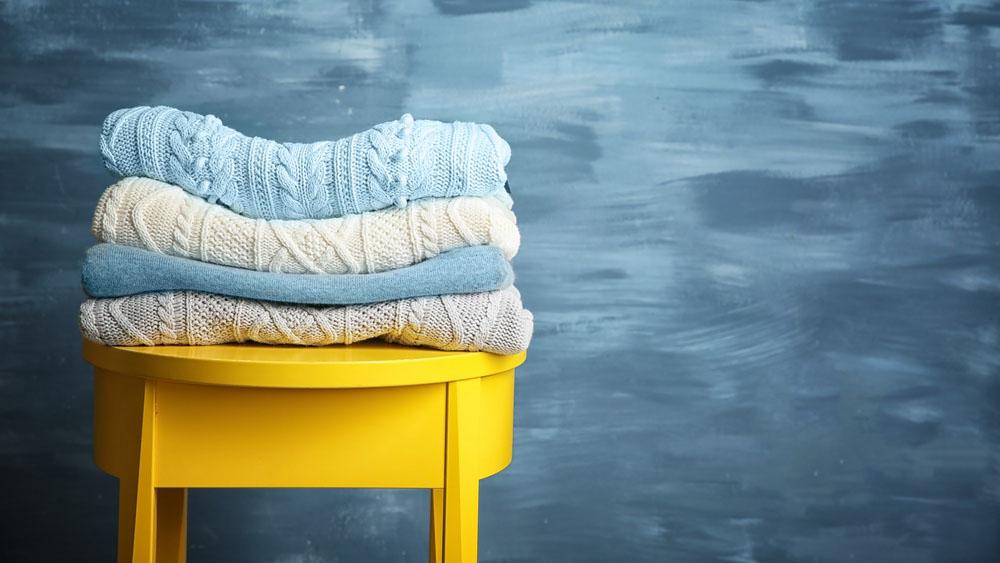
1. Use Mild Detergent
Knitted items, such as scarves and sweaters, should be laundered using a mild liquid detergent. It would be best if you could make use of liquid detergent specifically formulated for washing winter clothes.
Avoid twisting the sweater as this could potentially cause damage to the fabric. Move the sweater around by just swishing it.
You have to do this process again and again until your sweater is clean and there is no detergent left on it.
2. Wash Your Jackets and Coats in the Machine
The best way to clean your coat is to throw it in the washing machine with some eco-friendly detergent, set it on the delicate cycle, and give it half an hour to soak.
Squeeze out any remaining excess liquid, then hang your jackets to dry. If you want them to look fluffier, you could put a few tennis balls in the dryer with them.
3. Do Not Overlook Slush and Spots
Even if the winter months cause us to be sluggish and tired, it is important to address any stains as soon as possible. When allowed to remain on clothing for prolonged periods of time, stains become increasingly difficult to remove. Place a few drops of eco-friendly liquid detergent directly into the problem areas, and then rub them in a circular motion.
You can then easily eliminate any filthy particles in an effective manner. It is important to deal with them as soon as they come to your attention.
4. Don’t Iron Your Winter Clothes
Always remember that you shouldn’t press woolen clothes that are already dry. When woolen fabrics are dry, ironing them does not get rid of deep folds.
When exposed to direct, dry heat, they also tend to burn easily.
I recommend using a steam press, but if you don’t have one, you can try drying your woolen clothes with a slightly damp plain white cloth. Put it between the iron and the woolen fabric to protect both. This gets rid of the wrinkles and keeps safe your woolen clothes from getting damaged.
Besides, always try using garment bags or plastic storage bins to protect your winter clothes from dust and pests.
Keeping your winter clothes in good shape for years to come is easy if you follow these simple tips.
Wrapping Up
As winter approaches, it’s important to have the right winter clothes to stay warm. If you have gone through this guide thoroughly, you will be able to keep yourself comfortable and warm throughout winter.
With the right pieces, you can stay warm and look great all season long with the right pieces. So keep experimenting with different materials and layers to find what works best for you.
Stay safe and warm this winter!
This post was written by Kosha team member – Ayushi Jaiswal
